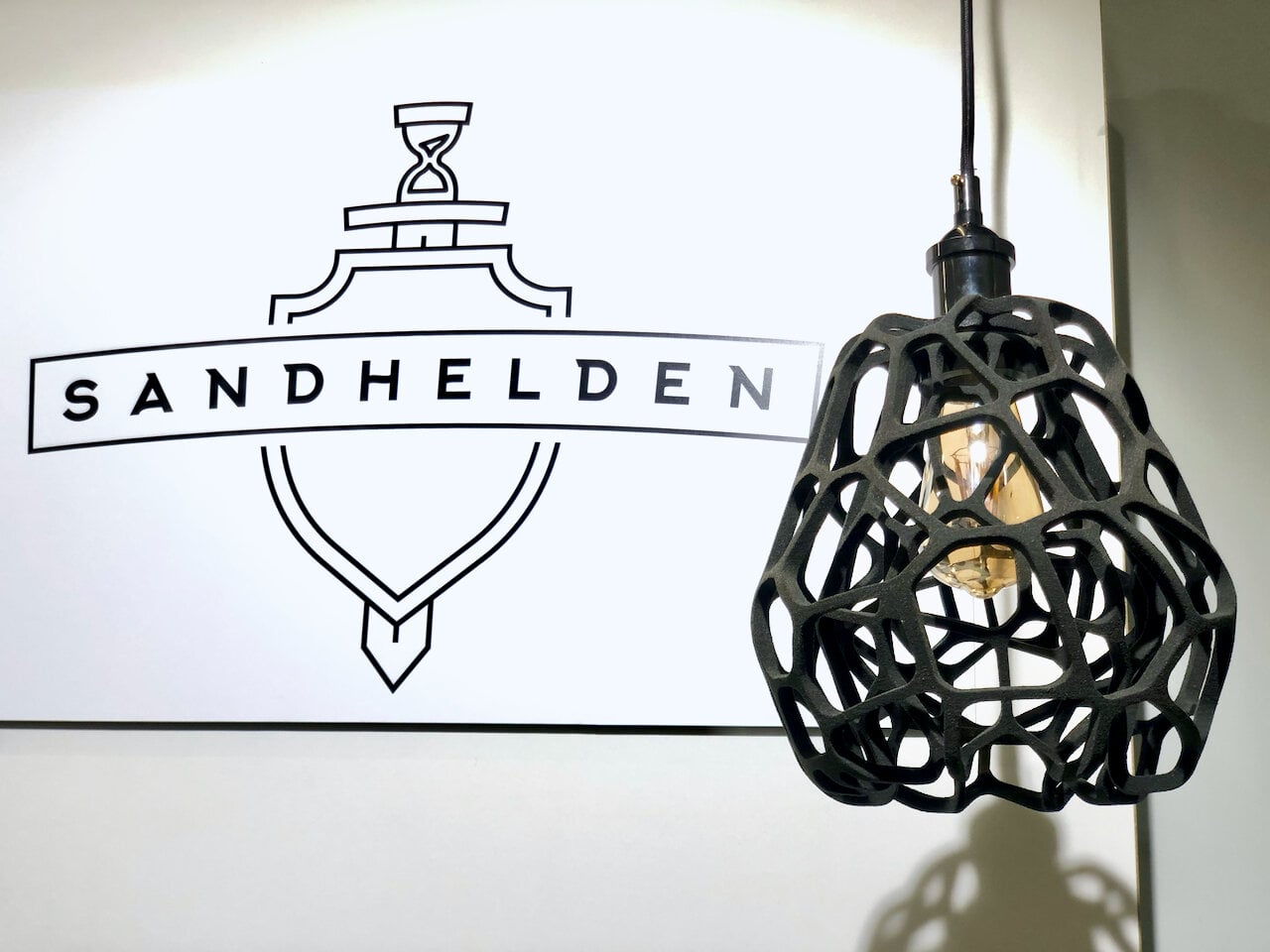![3D printed lamp made from specially-processed sand by Sandhelden [Source: Fabbaloo]](https://fabbaloo.com/wp-content/uploads/2020/05/sandhelden-lamp-1_img_5eb08ce36d050.jpg)
We had a chat with Sandhelden, a company we’d previously examined.
The German company is a service provider that is able to produce incredible solid 3D prints from sand, typically for artists and designers. In fact, we selected one of their previous projects, a 3D printed bathtub, as our Design of the Week last year.
Sandhelden Process
Their process is essentially a fancy type of post processing. Normally they have prints completed on either voxelJet or ExOne equipment, who can 3D print in sand. However, those 3D printers are typically used by foundries to produce molds for casting because of the fragility of the raw print.
Sandhelden does something quite different. While those performing casting will 3D print a “negative” or mold, instead Sandhelden will print a “positive”, a representation of the desired object.
Then their secret epoxy-based infiltration is performed on the raw sand print to transform it into an incredibly solid and durable object. Combined with the large volumes provided by the voxelJet equipment in particular, their process can create some incredible objects.
Sandhelden Artistic Clients
![Unusual artistic piece 3D printed in sand by Sandhelden [Source: Fabbaloo]](https://fabbaloo.com/wp-content/uploads/2020/05/sandhelden-thing-1_img_5eb08ce428029.jpg)
They’ve built a rapidly growing list of creative clients, who seem much more attracted to the notion of 3D printed sand objects than plastic. You may recall some years ago when 3D printing first emerged there were plenty of large artistic works done, but I’ve since seen fewer. It may be that Sandhelden is on to something here.
![Another artistic 3D print by Sandhelden [Source: Fabbaloo]](https://fabbaloo.com/wp-content/uploads/2020/05/sandhelden-cup-1_img_5eb08ce48e8b1.jpg)
Here we see an artistic object of some unknown type. While it appears to be fragile due to its sandy surface, it’s actually extremely solid and quite durable.
Sandhelden Divisions
The company has split their service into two parts: a “Sanitary” division that specializes in sinks, tubs and similar fancy household objects; and a service business focused on construction objects.
The service business would develop things like unusual ceiling panels, or bricks optimized to handle a particular type of piping system. While you cannot truly 3D print a home, it seems that Sandhelden would be able to 3D print at least some of the major construction components, particularly the visually artistic items.
And then they could equip the home with sinks, tubs, lamps and more.
Via Sandhelden

